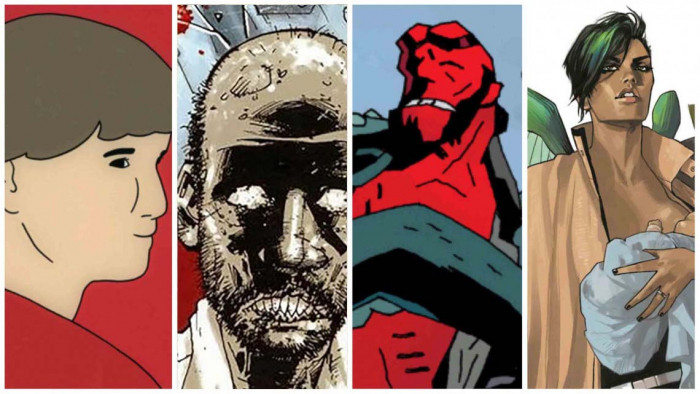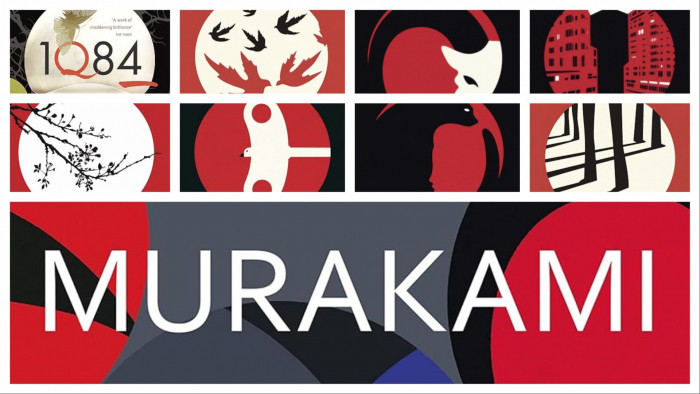Land of the free. Home of the brave. Kingdom of the Kardashians. Yes, America has given the world much to celebrate in a short space of time.
The nation's roster of top class authors is no exception to that rule. Since splitting from the land of Shakespeare, Orwell and Dickens, writers of the United States have blessed the world with thousands upon thousands of memorable tales themselves.
Put these esteemed names alongside America's thriving tourism industry, with its chocolate-box countryside, gargantuan food portions and downright friendly demeanor, and, well, you might just have the trip of a lifetime.
We've whittled down eight of the very best literary pilgrimages you can take this summer and beyond. Enjoy...
And do make sure to click here for a literary travel guide of the UK
___________________________________________________________
John Steinbeck, Pacific Grove, CA
If the ‘30s were a prosperous decade for Pacific Grove, its many of rows of heaving wooden structures packed to the rafters with industry, optimism and blue-collar pride, the same could easily have been said of then-resident John Steinbeck. The author had moved to the West Coast fishing heartland with his first wife Carol until they divorced in 1941, and, just as he had done with the migrant beet farmers he’d met out in the country during summers gone by, he shared his company with the working classes down at those cannery areas, helping him to get straight to the heart of the proletarian issues which became such a vital part of his literary DNA through titles such as Of Mice And Men. Bonus: you’ll also be following in the footsteps of Robert Louis Stevenson, who spent much of 1879 writing about the area’s Chinese fishing community during one elongated trip.
Must-see:
Cannery Row, where else? Granted, it’s a much more gentrified area than back when Steinbeck’s 1945 novel of the same name was published - missing are the sweat-laden workers, gone the hustle and stink of fish, but many of the old buildings and crusty shacks remain. Just pop over to the lab of Steinbeck’s marine biologist friend Ed Ricketts over at 800 Cannery Row, the basis for Doc’s own marine lab in the book; or the site of a nearby jail which locals will attest housed many of the author’s hot-headed friends at one time or another. Bend their ears some more and they may even let slip that it used to be known as Ocean View Avenue, only named Cannery Row in tribute to the book. Just be sure to take the 30 minute drive to Steinbeck’s boyhood home at 6250 Greenwood Lane, Salinas, now a national-registered museum and restaurant. Oh, and a few blocks away you’ll find The National Steinbeck Centre, a genuine mecca for any self-professing fan.
Cannery Row Monterey, CA 93940
Where to stay:
We spoil you, we really do: 'John Steinbeck’s Cottage' is currently available for groups of three or less on cool-with-the-kids website Airbnb, meaning you can stay in one of the properties formally owned by the literary genius, all without parting with a small fortune. The advertisement even comes with a line from 1941’s A Life In Letters (‘I bought a small house and garden in Pacific Grove’) – hard to say no, right?
Eardley Avenue, CA 93950
___________________________________________________________
Jack London, Glen Ellen, CA
Born to a single mother, self-educated, impoverished for much of his early life in San Francisco where the city’s 1906 earthquake would see his home razed by fire, and narrowly avoiding from scurvy during the Klondike Gold Rush (the experience later recalled for The Call Of The Wild), against all the odds, Jack London went on to achieve a great deal in his 40 years. His actual route to striking gold, of course, came as a fiction writer, amassing one serious oeuvre by the age of 30 and retreating to the rolling hills of The Sonoma Valley, in a spot now known as Jack London State Park. That's right, they went and named the area after him; all 46 acres of it.
Must-see:
Life must have seemed like it was repeating itself for poor Jack on 22 August 1913, after Wolf House, a semi-stone mansion he and his wife Charmian had all but finished building, burnt down to the ground, leaving a ruin of rubble still visible in the Park today. Thankfully, the couple’s wood-framed Cottage has remained, its doors flung open to anyone after a glimpse of the farming habits and literary environment which London enjoyed before his bad health took its toll in late 1916. You can even take a stroll and see where his ashes were scattered across a nearby grave site. Not that London would have warmed to the idea: “I would rather be ashes than dust, neatly summed I would rather that my spark should burn out in a brilliant blaze than it should be stifled by dry-rot. I would rather be a superb meteor, every atom of me in magnificent glow, than a sleepy and permanent planet.”
2400 London Ranch Rd, Glen Ellen, CA 95442
Where to stay:
Do as London would have - pitch a tent. Camping areas are available at neighbouring Sugarloaf Ridge State Park, only a 20 minute drive away from the aforementioned landmarks and just as rich in scenery as the writer’s old stomping ground. Along with a number of scenic hiking routes, Sugarloaf is also home to the Robert Ferguson Observatory, one of the largest in the US.
2605 Adobe Canyon Rd, Kenwood, CA 95452
___________________________________________________________
William Faulkner – Oxford, MS
Still looking for Yoknapatawpha County on Expedia? You’ve more chance of finding Neverland. While the name might be entirely fictional, the locations and landmarks found in much of Faulkner's work are not. He based much of the terrain on Mississippi's Lafayette County, while modelling Jefferson in particular on his hometown of Oxford - now a thriving college town welcoming literary buffs by the bus-load. Few leave without paying their respects at the great man’s gravestone, where it's become custom to take a bottle of whiskey (JD was Faulkner's brand), have a swig and leave the rest of the bottle on the stonework. Well, at least that's one way of ensuring his spirit remains in the town.
Must-see:
"They approached the square, where the Confederate soldier gazed with empty eyes beneath his marble hand in wind and weather." It’s difficult not to summon a similar train of thought as that passage from The Sound And The Fury when peering up at the imperviously white military man stood defiantly above the University Grounds at Oxford Square, never allowing you to catch his gaze, as if he’s staring back at time itself. Nearby, you’ll find a metallic effigy of Faulkner perched on a bench with body language so laissez faire it's like he's asking for a photo opportunity. Keep your eyes peeled for other literary Easter Eggs dotted around the square.
Courthouse Square, MS 38655
Where to stay:
The Inn At Ole Miss. Schmaltzy title aside, it’s perfectly located. Mere minutes from the town square and not much longer from the next point on your trip - Rowan Oak, home to Faulkner and his family for over 40 years, and now a museum of sorts ran by the University Of Mississippi in which you can see Faulkner’s paintings, hear of his family life and learn of his other pursuits. If you find time, be sure to check out the vacated Thompson-Chandler House (923 South 13th Street): the basis for the Compson’s home in The Sound And The Fury - you may just find the property’s current emptiness echoes the emotional detachment felt by the mute Benjy in the book.
120 Alumni Dr, MS 38677
___________________________________________________________
Stephen King – Bangor, ME
Between child-eating demonic clowns, interstellar macro-viruses and other obvious tourist board annoyances, it’s hard to blame Stephen King for swapping the name of Bangor for Derry, where he’s based much of his literary canon and, in turn, lured many a tourist to the scenic Maine town with those doom-filled links. Another big draw is that King himself still resides here - in a 5,000-sq foot Victorian mansion with gargoyles and bat-themed fencing, naturally. So keep an eye out for that on West Broadway.
Must-see:
For a real eerie vibe, hotfoot it to the sizeable Mount Hope Cemetery, a short ride along the highway from downtown. As well as a direct inspiration for Pet Sematary, the 264 acre site, dating back to 1834, was even used as a filming location for the cinematic version. Afterwards, head back into town towards the Thomas Hill Standpipe, a 105-year-old water tower which you may remember played a hefty role in IT, as the scene of children's bodies being pulled out. Further King geekdom can be achieved by hunting for a nearby park bench, reportedly where the author came up with this grizzliest of plot details.
1048 State St, ME 04401
Where to stay:
There’s only one hotel worth staying at when it comes to this sort of holiday. Unfortunately the Stanley Hotel, better known as the hotel which inspired King to write about The Overlook Hotel in The Shining, is thousands of miles away in Colorado. The closest we could suggest for ambience is The Hilton Garden Inn, boasting a an eerily similar entrance and interior as bucolically grand. Don’t be upset at the lack of bloodless elevators and ghoulish staff, mind - king rooms are available.
250 Haskell Road, ME 04401
___________________________________________________________
Harriet Beecher Stowe - Hartford, CT
Has America ever had a literary voice more important than Harriet Beecher Stowe's? A shining paragon of virtue, humanity and talent, her evocative and anti-slavery message sewn into Uncle Tom’s Cabin was so impactful upon its release, shifting 300,000 copies in the US alone, that many believed it directly fuelled the US Civil War a decade later - even Abraham Lincoln, who met the authoress in 1962, reportedly quipped, “So you are the little woman who wrote the book that started this great war?” Go and see this very statue down on the Hartford riverfront.
Must-see:
Stowe’s own cabin, albeit sprawled across two floors and not really a cabin at all (but we liked the joke), where she lived from 1873 to her death in 1896. It’s a bona fide visitor’s goldmine, crammed with all manner of 18th century family heirlooms, photographs, paintings and furniture previously belonging to the heroine, giving anyone lucky enough to waltz in a picturesque snapshot of history. If all that weren’t enough, get in touch with the nearby Harriet Beecher Stowe Centre to arrange a themed tour around the house. Topics include ‘African American History’, ‘Women’s History’ and, for the horticulture fans, as Stowe herself was, ‘House and Gardening’.
Harrietbeecherstowecenter.org / Stowehousecincy.org
2950 Gilbert Ave, OH 45206
Where to stay:
You'll see just below this one, because...
___________________________________________________________
Mark Twain, Hartford, CT
Yes, another titan of books, another former Hartford resident, who, according to local legend asked the New York architect Edward Tuckerman to design his three-story Victorian gothic mansion and model it on a steamboat. The simple fact that this is entirely plausible is everything you need to know about Mark Twain, AKA Samuel Langhorne Clemens, but this leafy near mystical part of the world, too. Put simply, you can get drunk on literary lore alone in this town.
Must-see:
That very house, where Twain and family resided between 1874 and 1891. Take a gawp inside his Billiards Room, that 19th century man-pad where he scribbled some of his best works including Life on the Mississippi and The Adventures Of Tom Sawyer; a room of the upmost literary significance. Then there’s the library, packing in embossed wallpapers and an enormous hand-carved mantle which the family shipped over from Scotland. Beautifully designed, impeccably maintained, it’s like stepping back into another era without the faff of a flux capacitator.
351 Farmington Ave, CT 06105
Where to stay:
Given that the man himself was partial to a stream or three, why not check in at the downtown Marriot, overlooking the Connecticut River and an ideal base from which to explore more of the surrounding landscape. Make no mistake: this is book lovers’ country.
200 Columbus Blvd, CT 06103
___________________________________________________________
Cormac McCarthy – Knoxville, TN
So entwined with the formative years of Cormac McCarthy are the city and surroundings of Knoxville, that to visit is to better understand why his work is regularly awash with southern authenticity. While the skyline might have grown since he penned the ‘50s set semi-autobiographical classic Sutree, those intimidating Appalachian hillsides still abound, as do the ramshackle premises, embodying precisely what gave McCarthy’s colourful writing its gritty detail. Furthermore, if you’re dead set on looking for those places where the notoriously reclusive author placed his equally reclusive character Cornelius Buddy Sutree, you can trace some of the best haunts from the book using this smashing map.
Must-see:
'He'd a mind to see the station with the fireplaces and the inscriptions from Burns on the mantels...' Rivalling the LEGO-shaped exterior found outside the Southern Terminal for memorable sights, this inscription mentioned in Sutree is etched into an impressive fireplace to this day. It was also here, still on the cusp of international fame, McCarthy had a snap taken of him by biographer Mark Marrow in 1981. Upon being asked by Marrow why he liked the landmark so much, “This is where you get a ticket with the destination left blank,” came the wryly delivered reply, foretelling the writer’s own eventual move away from the city.
306 West Depot Avenue, TN 37917
Where to stay?
With the 5102 Kingston Pike’s Colony Motel (where the author, living on money gained through a Macarthur Fellows Grant in 1981, holed himself up writing Blood Meridian) long since demolished, you’ll want to head downtown, near Gay St, referenced not only in 1965’s The Orchard Keeper but numerous other works sure to keep you busy in the bustling area. The nearby upmarket Oliver Hotel is a chic place to recharge the batteries but totally in keeping with that historic ‘50s vibe.
407 Union Avenue, TN 37902
___________________________________________________________
Ernest Hemingway – New Orleans
'The last frontier of Bohemia,' was how Tennessee Williams impishly described the intoxicating hum of New Orleans, both drinking playground and creative pool for some of the late 19th century’s greatest literary talents, including old Ernest, spending more hazy nights on the titles of this charming town than most.
Must-see:
Truman Capote; William Faulkner; Tennessee Williams - that rascal Hemingway can count himself in good company as a regular at the Carousel Bar, the iconic drinking spot based around 2000 rollers and a single engine which rotate stools around a statuary bar inside the iconic Hotel Monteleone. Plant yourself in one of said stools, take a leaf out of Hemingway's book (A Farewell To Arms, to be precise, evoking the words, "I had never tasted anything so cool and clean - they made me feel civilised") and order yourself a Martini.
214 Royal St, LA 70130
Where to stay:
It’s also testament to the enduring appeal of the Monteleone that Hemingway rarely stayed anywhere else, even name-checking the celeb haunt in his short story Night Before Battle. And, before you state the obvious, it is indeed as expensive as the reputation suggests - so perhaps one night here and then a cheaper alternative closer to Bourbon Street, which was another area never far away from Hemingway during one of his flying visits.
214 Royal St, LA 70130
[Images: Frank Grace (Flickr), Wiki Commons, Jack London Park Holdings, Mark Twain House]










